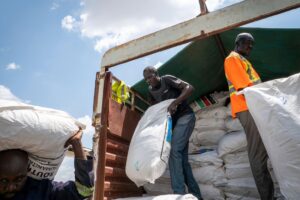President Donald Trump’s dismantling of climate policy means the US will add an extra 7bn tonnes of emissions to the atmosphere from now until 2030, compared to meeting its former climate pledge under the Paris Agreement.
Since winning office last November, he has issued a series of executive orders and is poised to sign his “big beautiful bill” that effectively terminates Biden-era climate policies.
Carbon Brief’s analysis of modelling from the Princeton University REPEAT Project shows that this means US emissions are now set to drop to just 3% below current levels by 2030 – effectively flatlining – rather than falling 40% as required to hit the now-defunct target.
This would leave the US around 2bn tonnes short of its greenhouse-gas emissions target for that year, adding emissions equivalent to around 4% of the current global total each year
To put this in context, it is roughly the annual output of Indonesia, the world’s sixth-largest emitter.
Trump is already withdrawing his nation from its international climate obligations under the Paris Agreement.
The passage of the new Republican-backed “megabill” means that US climate targets pursued by Trump’s predecessor now appear firmly out of reach.
7bn tonnes
Trump is due to sign the so-called “big beautiful bill” into law after it was approved by the Republican-controlled US Congress on 3 July.
This “megabill” removes virtually all of the tax credits for renewable energy, electric vehicles and clean manufacturing that were at the core of Biden’s landmark Inflation Reduction Act (IRA).
Since his return to the White House, Trump has moved to strip away his predecessor’s climate policies, including via a series of executive actions. This includes targeting vehicle fuel-efficiency standards and power sector emissions standards.
The passage of the new bill means US solar and wind power expansion will likely slow down, as will sales of electric vehicles and energy efficiency improvements. The combined effect of these policy rollbacks can be seen in the chart below, based on modelling by the REPEAT Project.
Carbon Brief has compared the impact of Trump’s policies, including the megabill, to a pathway on which the US meets its former target, under the Paris Agreement, to cut greenhouse gas emissions by 50-52% from 2005 levels by 2030.
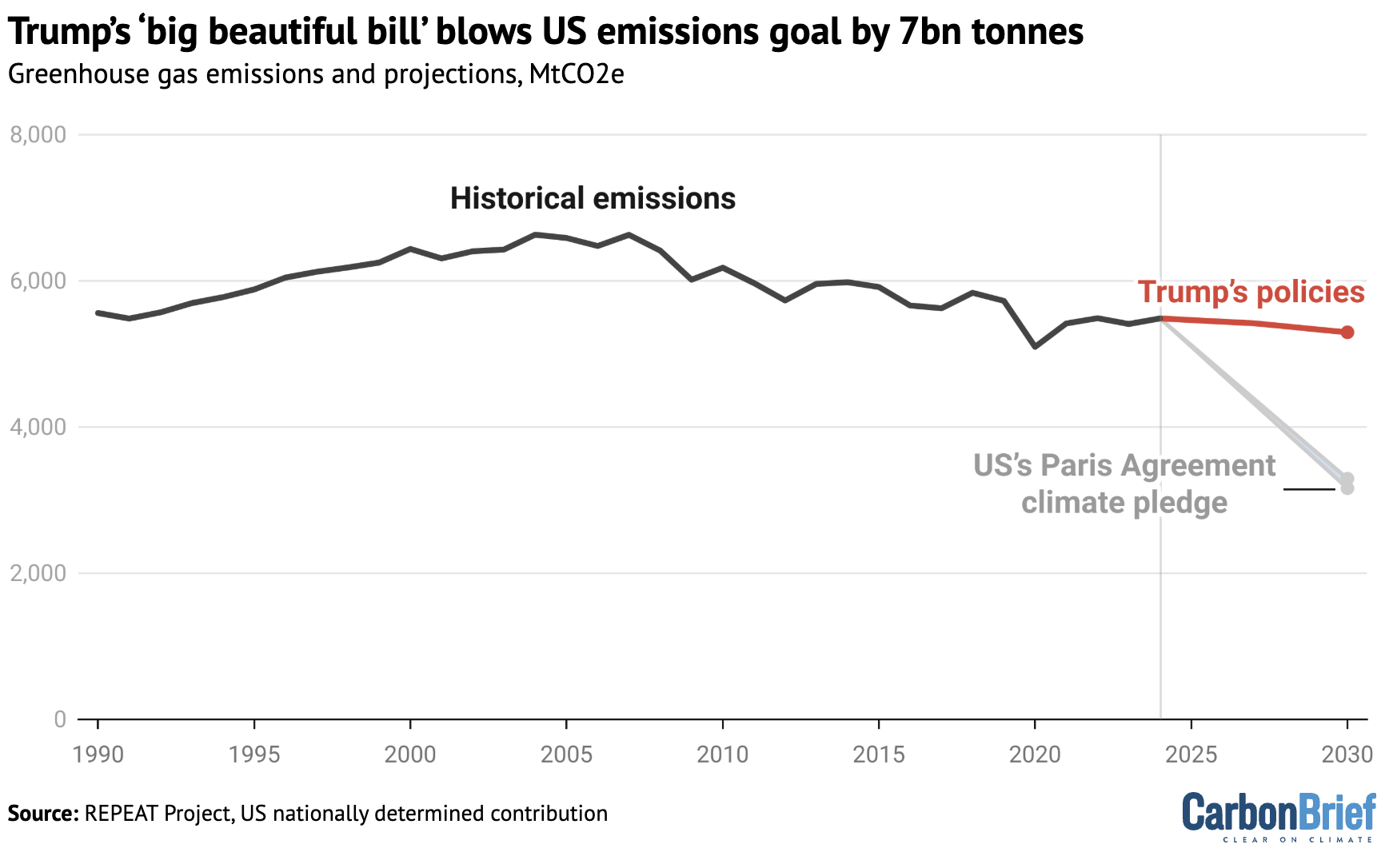
The cumulative gap between this pathway and the Trump administration’s trajectory amounts to 7bn tonnes of emissions over the next five years.
Under this new set of US policies, emissions are only expected to be 20% lower than 2005 levels by 2030, rather than 50-52%, meaning the nation would be 2bn tonnes short of its goal.
This amounts to just a 3% drop from 2024 levels by 2030, meaning emissions are effectively flatlining.
Renewables down, prices up
Among the hundreds of provisions in the new Republican-backed bill are several key rollbacks that are expected to affect US emissions.
Under the IRA, wind and solar projects could receive tax credits up to 2034. Following the Republican bill, most projects would need to start construction within the next year to qualify.
Without federal support, the pipeline of new renewable-energy projects is expected to contract.
The REPEAT analysts estimate that cumulative new solar capacity additions will drop by 29 gigawatts (GW) by 2030 and around 140GW by 2035. For wind power, the decrease is set to be 43GW by 2030 and 160GW by 2035.
Some renewable projects will likely be built without support, but developers will need to contend with other Trump administration policies, such as stopping federal windfarm approvals.
The lost renewable capacity is unlikely to be entirely replaced by fossil fuels, due to a multi-year backlog in the construction of gas-fired power plants.
Tax credits for nuclear and geothermal power have been retained until 2036 in the bill. While these projects generate clean electricity, they can also take a long time to build.
Other key policies in the new bill include the removal of tax credits worth up to $7,500 to purchase electric vehicles, which could result in tens of millions fewer such cars and vans being sold. Ending tax credits for low-carbon manufacturing is also expected to undo progress in building clean technologies, such as solar panels and electric cars, domestically.
Beyond its effect on US emissions, various early analyses have suggested the Republican-backed bill is likely to increase energy prices and lead to job losses.
REPEAT estimates household energy costs are likely to be $165 higher in 2030 and more than $280 higher by 2035, following the passing of the bill.
Some of this increase can be attributed to fewer electric vehicles on the road, leading to higher petrol and diesel consumption and prices. Slowing construction of solar and wind projects as power demand increases will also likely affect the cost of electricity.
Without tax credits to boost the construction of new generation capacity, residential electricity prices are set to increase by 7% – or $110 – by 2026, for the average US customer, according to analysis conducted for trade body the Clean Energy Buyers Association.
In the state of Wyoming, the same analysis found that electricity prices may rise by as much as 30% over the next year. Other firmly Republican states, such as North Carolina and Tennessee, are also expected to see near-term price rises in the double digits.
Methodology
Modelling of the impact of the Trump administration’s “big beautiful bill” is from the REPEAT Project, a joint initiative of the Princeton University ZERO Lab and Evolved Energy Research.
The project has assessed the emissions impact of the executive actions that the Trump administration has already taken to unwind Biden-era policies, as well as the bill itself.
Carbon Brief compared this trajectory out to 2030 with a straight-line pathway towards the official US climate target for 2030. This is set out in the US’ nationally determined contribution (NDC) under the Paris Agreement. It is worth noting that the Trump administration is withdrawing the US from the Paris Agreement.
The post Chart: Trump’s ‘big beautiful bill’ blows US emissions goal by 7bn tonnes appeared first on Carbon Brief.
Chart: Trump’s ‘big beautiful bill’ blows US emissions goal by 7bn tonnes
Climate Change
Bolivia’s shift to the right renews ambition to mine vast lithium reserves
Bolivia’s election of centre-right President-elect Rodrigo Paz Pereira could see the country open its vast lithium resources to foreign investors to bolster its faltering economy – a move that could benefit the US after years of hostility toward Washington, analysts say.
Paz, a senator and the son of a former president, won the country’s election earlier this month, ending two decades of left-wing rule, which constrained foreign investment in the South American nation’s mineral wealth.
The change in government may be welcomed by investors in the US, which is seeking to secure access to minerals that are critical for clean technology and military equipment, to counter China’s supply chain dominance, and has previously raised concerns over Chinese investments in the region’s lithium industry.
Lithium is a key material to manufacture rechargeable batteries for electric vehicles and energy storage.
Bolivia makes up less than 1% of global lithium production despite possessing some of the world’s largest reserves, with an estimated 23 million tonnes, or 20% of the global total.
Paz has pledged to seek overseas partnerships to tap these reserves. But he will have to balance engaging the US with maintaining investment from China and Russia initiated by his predecessors.
“Exactly what he does on this issue will determine his relationship with China and Russia,” said Farit Rojas, a professor at the Higher University of San Andrés in La Paz.
At the same time, the political reset could provide Bolivia with a critical opportunity to set clearer and stricter environmental and social standards for developing its burgeoning lithium sector, analysts told Climate Home News.
Bolivia’s lithium dream
Paz’s election comes at a pivotal moment for the country. It is mired in an economic crisis spurred by runaway inflation caused by a foreign currency shortage, leaving people waiting in long lines for fuel and essentials like cooking oil.
Converting lithium reserves into a profitable export industry would bring much needed dollars into the country.
But doing so would require amending Bolivia’s constitution to allow private firms to extract the mineral. That privilege was restricted to Bolivia’s state-owned companies under the 20-year rule of the Movement for Socialism (MAS), the party formerly led by ex-President Evo Morales.
Constitutional restrictions and past rejection of foreign investment mean Bolivia’s lithium resources remain largely untapped compared to neighbouring Argentina and Chile, whose deposits are of higher quality.
A significant share of Bolivia’s deposits also lie beneath the Salar de Uyuni salt flats, a major tourist attraction.
Paz, whose party does not have a legislative majority, has yet to say whether and how he will amend Bolivia’s constitution. But he has pledged not to “sell out” Salar de Uyuni.
US, China and Russia: a balancing act
His first months in office will be watched closely by the Trump administration. Following Paz’s election victory, the US Department of State pledged to work with him on “shared goals of regional and global security, economic prosperity, and growth that will benefit our nations”.
For the US, this could be an opportunity to break China and Russia’s grip on Bolivia’s lithium reserves, said Pablo Hamilton, a Chilean mining lawyer connecting foreign investors with energy opportunities in Bolivia.
In 2024, Bolivia’s state-owned Yacimientos de Litio Bolivianos lithium company signed contracts worth a combined $2 billion with Chinese and Russian firms to extract lithium beneath the Salar de Uyuni salt flats. The year prior, it signed a $1.4 billion deal with Chinese battery manufacturing giant CATL to develop its lithium resources.
AI and satellite data help researchers map world’s transition minerals rush
But those contracts – which have yet to be approved by Bolivia’s legislature – have been sharply criticised by scientists, Indigenous peoples and local communities because of a lack of transparency over the consultation process, inconsistencies within the contracts and environmental risks. Paz has pledged to review the contracts.
Cancelling the contracts could cause investors to worry about policy volatility, Hamilton told Climate Home News. But the administration could justify doing so if it can prove allegations of corruption that have swirled around the deals. It could also provide an opportunity to establish stricter mining standards that provide certainty to potential investors.
Investors “don’t know what to expect”
“The rules are not clear enough. It’s very concerning that investors don’t know what to expect,” Hamilton said. “This is a great opportunity to [mandate] a free, prior and informed consultation process and environmental impact assessments – really professional ones, not just to tick the box.”
To attract foreign investment, Paz will likely seek to build public-private partnerships, which will require greater engagement from local actors than in the past, Hamilton said.
In the area surrounding Salar de Uyuni, Indigenous groups have lost trust in the government, citing the shadowy allocation of mining contracts and saying their communities have not benefited from mining.
They also worry that additional extraction would deplete the limited freshwater resources they rely on for farming, said Gonzalo Mondaca of environmental organisation Cedib, which works with communities living in the lithium-rich region.
Efforts to green lithium extraction face scrutiny over water use
The proposed Chinese and Russian extraction plans would use direct lithium extraction (DLE), a group of technologies that proponents say can help extract more lithium with fewer environmental impacts but which still uses large amounts of water.
But existing environmental assessments are not sufficient to understand the impact of the technique on the salt flat’s ecosystem, said Mondaca.
On the campaign trail, Paz also said he would seek to export the magnesium byproducts of lithium extraction to the US and China.
However, that plan requires a high level of technological development and Bolivia currently lacks the necessary infrastructure, said Mondaca.
Even if the new president manages to clear constitutional hurdles to liberalise the country’s lithium sector, “there is still a long way to go,” he added.
The post Bolivia’s shift to the right renews ambition to mine vast lithium reserves appeared first on Climate Home News.
Bolivia’s shift to the right renews ambition to mine vast lithium reserves
Climate Change
10 reasons why we need to act for the Amazon
The Amazon isn’t just the world’s greatest rainforest. She has been home to her original people for tens of thousands of years, who have persisted through centuries of colonial incursions to protect their home. At each moment of each day, the Amazon breathes, dances, and sings with an endless variety of plants and animals, many of those we humans have yet to understand. The Amazon is life-giving, irreplaceable and yet profoundly vulnerable.
Here are 10 fascinating facts to inspire you to take action for the Amazon:
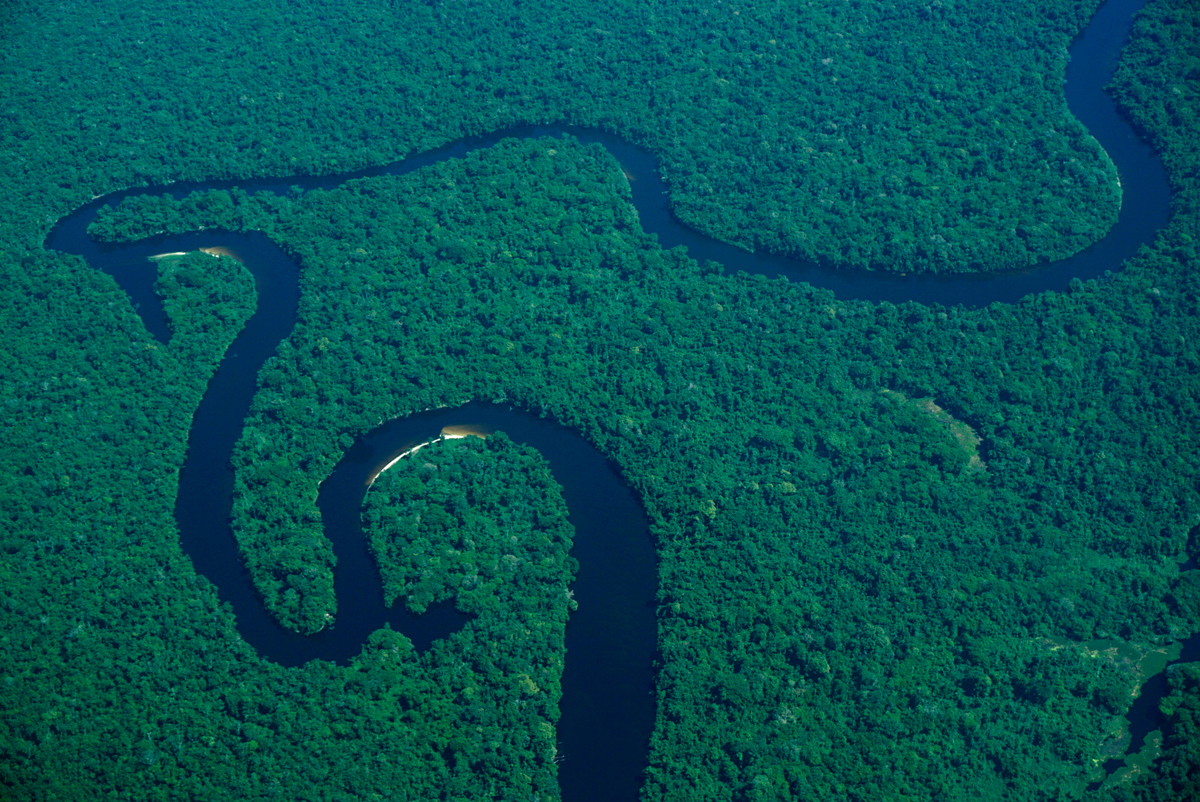
1- The Amazon is the largest rainforest in the world
Spanning over nine countries in South America, the Amazon is the largest tropical forest on the planet, covering 6.7 million square kilometres. To put it in perspective, she is twice the size of India—the largest country in South Asia. The biggest part, around 60%, is in Brazil. After the Amazon, the Congo Basin and Papua host the world’s largest remaining rainforests.
2- The Amazon is one of the most biodiverse ecosystems on Earth
The Amazon is home to approximately 10% of all known species of fauna and flora worldwide. From the beautiful hyacinth macaws to fearless jaguars and the amazing pink dolphins, this vibrant ecosystem is teeming with life. In some areas, a single hectare can contain more than 300 tree species, approximately two-thirds of the native tree species in Europe (454), making the Amazon one of the most botanically rich regions on Earth.
Studies show that the Amazon Basin harbours at least 2,716 species of fish, 427 amphibians, 371 reptiles, 1,300 birds, and 425 mammals. However, the vast majority of its biodiversity lies in her invertebrates, particularly insects, with over 2.5 million species currently known

3- There are approximately 3 million Indigenous People living in the Amazon
The Amazon is home to a diverse group of Indigenous Peoples. Over 390 Indigenous Peoples live in the region, along with approximately 137 isolated groups, who have chosen to remain uncontacted.
In Brazil, about 51.2% of the country’s Indigenous population resides in the Amazon. But the largest tropical forest in the world is also home to traditional communities that have lived in harmony with the forest for generations, such as Rubber Tappers, Ribeirinhos—who inhabit the Amazon’s riverbanks—and Quilombolas, Afro-Brazilian communities descended from enslaved people..
4- The Amazon is home to over 40 million people
The Amazon is not just a vast rainforest rich in biodiversity and home to Indigenous People—it is also home to several cities. In Brazil, These include Manaus , an industrial hub with a population of 2.2 million, and Belém , which will host the United Nations Climate Conference (COP30) in November 2025.
These people’s lives are intrinsically connected to the forest. They depend on her for their food, fresh water, and to regulate the local climate. Smoke from the fires in the Amazon directly impacts the people living in the region, darkening the skies and causing respiratory problems to the population, especially children and elders.
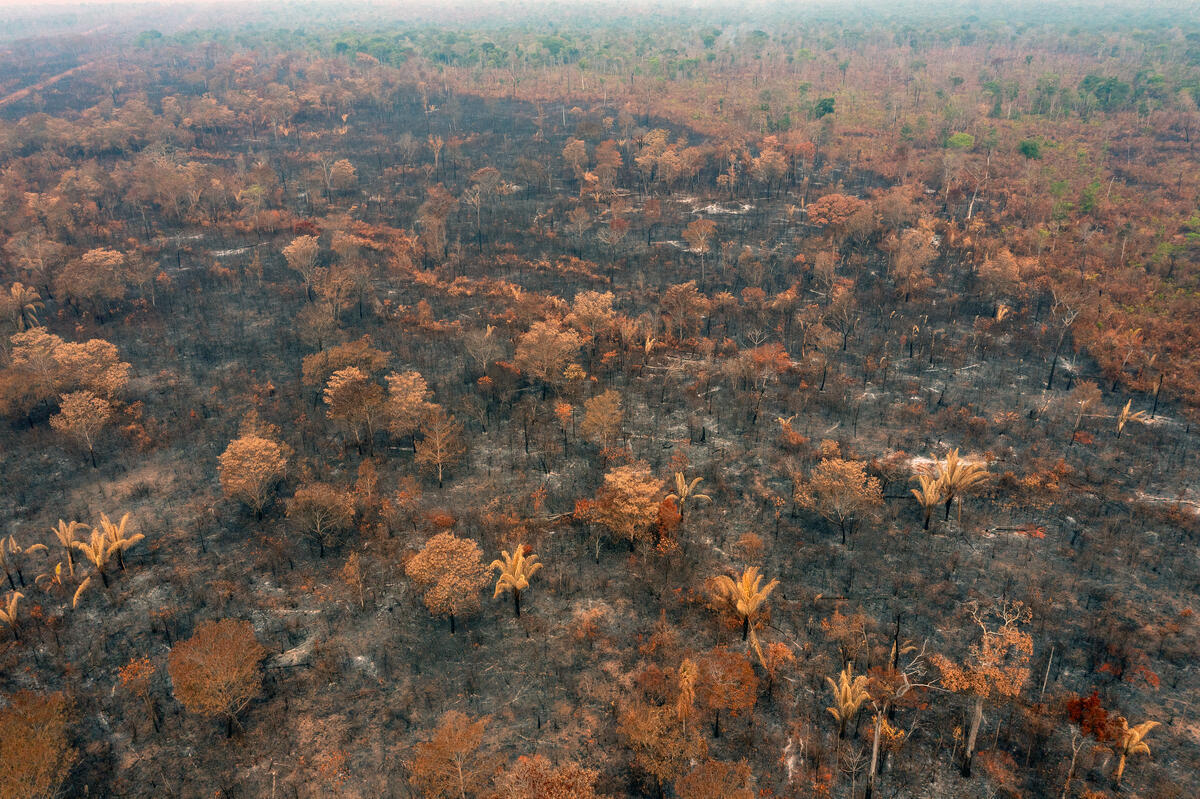
5- The Amazon is vital for the global climate
The Amazon is estimated to store about 123 billion tons of carbon, both above and below ground, making her one of Earth’s most crucial “carbon reserves”, vital in the fight against the climate crisis. However, studies show that fire- and deforestation-affected areas of the Amazon are now releasing more CO₂ into the atmosphere than they absorb. This poses a major threat to the global climate. Protecting the Amazon means protecting the future of everyone.
6- Fires in the Amazon are not natural
Unlike bushfires in Australia and other parts of the world, fires in the Amazon are not natural. In the Amazon biome, fire is used in the deforestation process to clear the land for agriculture and pasture. The use of fire in the Amazon is often illegal, and so is deforestation. This practice has a major impact on the local biodiversity, the health of the populations living in the region, and to the global climate, as the fires release vast amounts of carbon into the atmosphere.
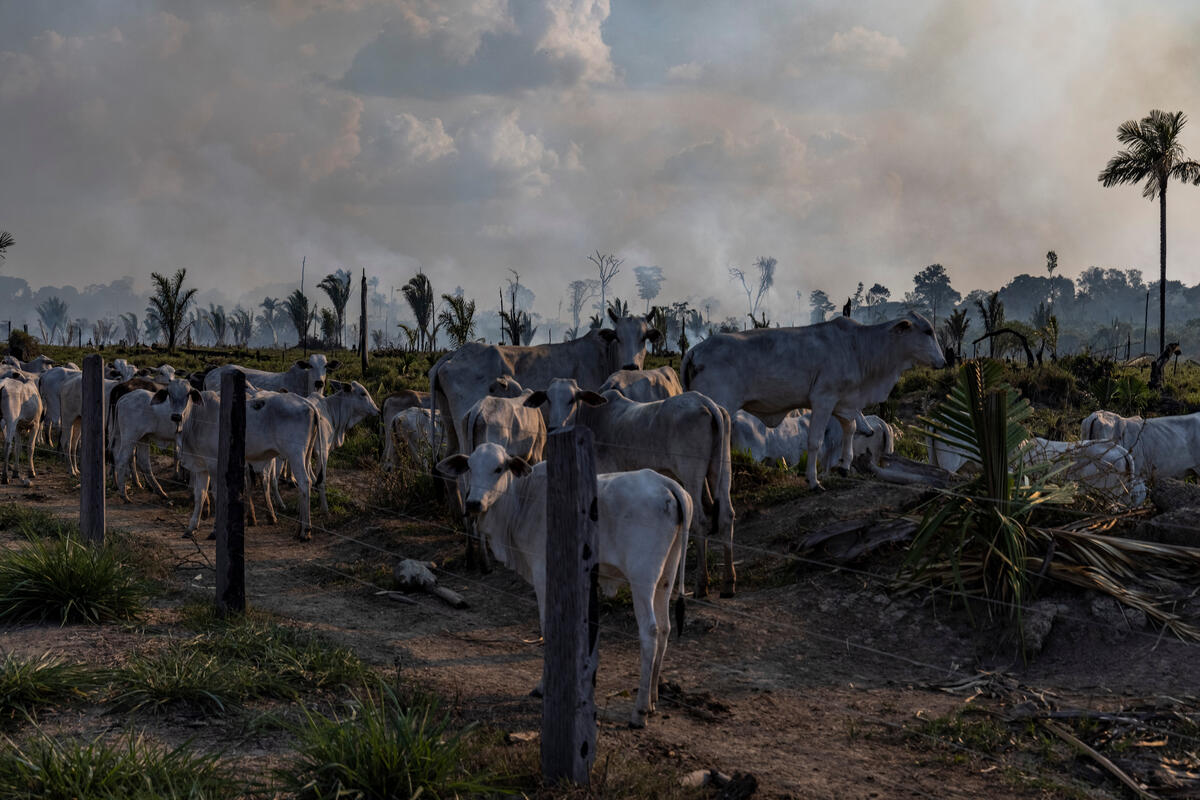
© Victor Moriyama / Amazônia em Chamas
7- Cattle ranching is the leading cause of deforestation in the Amazon
The expansion of agribusiness in the Amazon is putting more and more pressure on the forest. According to a study, 90% of the deforested areas in the Brazilian Amazon are turned into pasture to produce meat and dairy. This means the food we eat may be linked to deforestation in the Amazon. We must urge our governments to stop buying from forest destroyers and ensure supply chains are free from deforestation, and demand stronger protections for the Amazon.
8- Illegal gold mining is a major threat to Indigenous Peoples
Illegal gold mining in Indigenous Lands in Brazil surged by 265% in just five years, between 2018 and 2022. The activity poses a severe threat to the health and the lives of Indigenous People, destroying rivers, contaminating communities with mercury and bringing violence and death to their territories.
But illegal gold mining doesn’t impact just the forest and Indigenous People. A recent study showed that mercury-contaminated fish are being sold in markets in major Amazonian cities, putting the health of millions at risk.
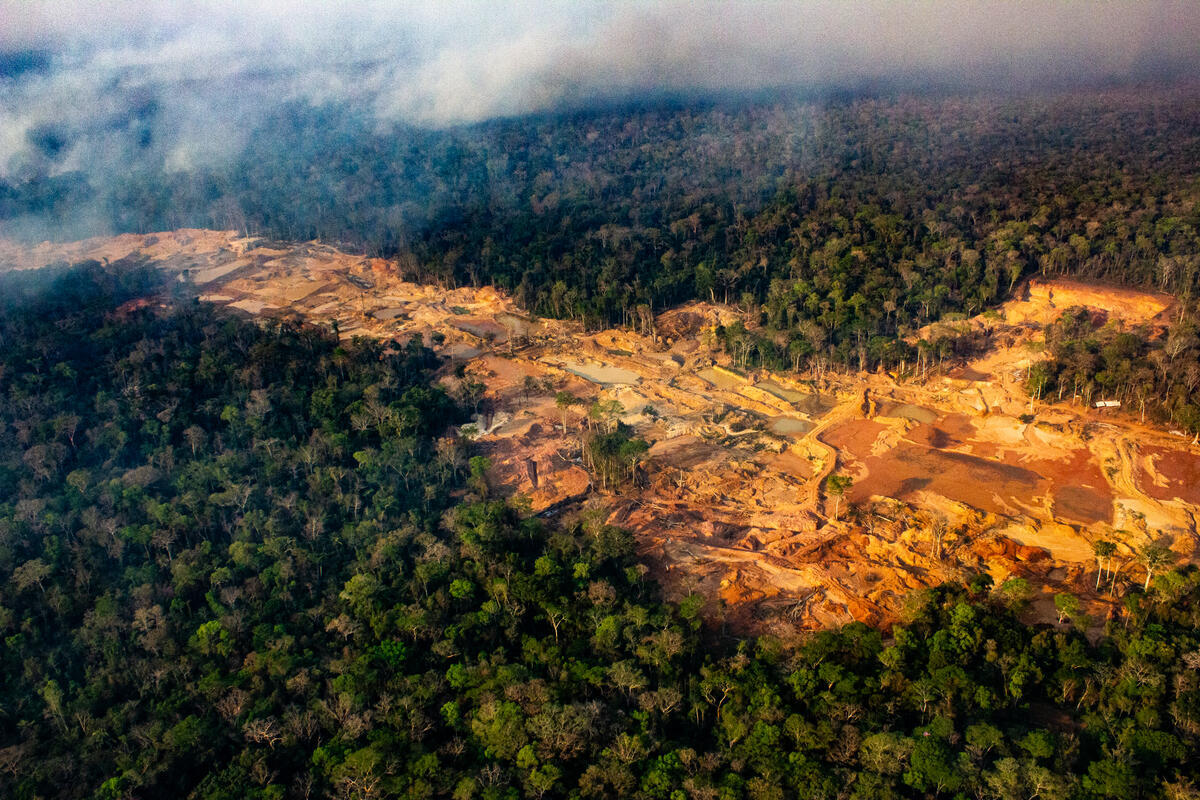
9- The Amazon is close to a point of no return
About 17% of the Amazon has already been deforested, and scientists warn we are getting dangerously close to a ‘point of no return’.
According to a study, if we lose between 20% and 25% of the Amazon, the forest might lose its ability to generate its own moisture, leading to reduced rainfall, higher temperatures, and a self-reinforcing cycle of drying and degradation.
As a result, vast areas of the forest could turn into a drier, savanna-like ecosystem, unable to sustain her rich biodiversity. This could have catastrophic consequences for the global climate, local communities, and the planet’s ecological balance.
10- The most important Climate Conference in the world is happening in the Amazon this year
COP30, the United Nations Climate Conference, will take place in Belém, the second largest city in the Amazon region, in November 2025. During the conference, representatives from countries all over the world will meet to discuss measures to protect the climate. Across the globe, we are already witnessing and feeling the impacts of the climate crisis. This is our chance to demand our political leaders move beyond words to urgent action. They must stop granting permission and public funds to Earth-destroying industries. Instead, our leaders must respect, pursue, and support real solutions that already exist—solutions that put the forest and her people at the heart of the response. Indigenous guardians of the forest hold true authority, and they must be respected and heard. The moment is now.
We are the turning point! Join the movement and demand respect for the Amazon.
Climate Change
As the Data Center Boom Ramps Up in the Rural Midwest, What Should Communities Expect?
The rapid development will change the Corn Belt in significant, unforeseen ways. Residents are just beginning to grapple with what that means.
TAZEWELL COUNTY, Ill.—To the untrained eye, Central Illinois is all lush fields of corn and green soybeans shortly before harvest. The wind shuffles through the row crops, and the air is warm and humid and full of insects. The horizon is dotted with power lines, strung together by wire, and the occasional water tower—the only objects that disrupt a vast sky.
As the Data Center Boom Ramps Up in the Rural Midwest, What Should Communities Expect?
-
Climate Change2 years ago
Spanish-language misinformation on renewable energy spreads online, report shows
-
Climate Change3 months ago
Guest post: Why China is still building new coal – and when it might stop
-
Climate Change Videos2 years ago
The toxic gas flares fuelling Nigeria’s climate change – BBC News
-

 Greenhouse Gases1 year ago
Greenhouse Gases1 year ago嘉宾来稿:满足中国增长的用电需求 光伏加储能“比新建煤电更实惠”
-
Greenhouse Gases3 months ago
Guest post: Why China is still building new coal – and when it might stop
-

 Climate Change1 year ago
Climate Change1 year ago嘉宾来稿:满足中国增长的用电需求 光伏加储能“比新建煤电更实惠”
-

 Carbon Footprint2 years ago
Carbon Footprint2 years agoUS SEC’s Climate Disclosure Rules Spur Renewed Interest in Carbon Credits
-
Renewable Energy4 months ago
US Grid Strain, Possible Allete Sale




